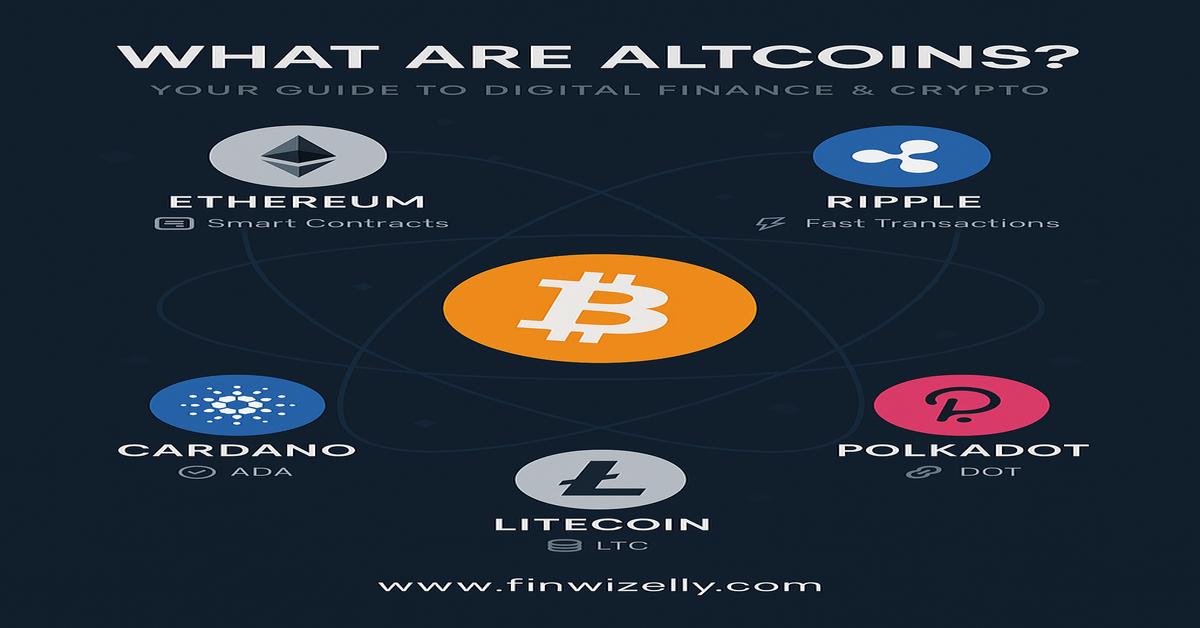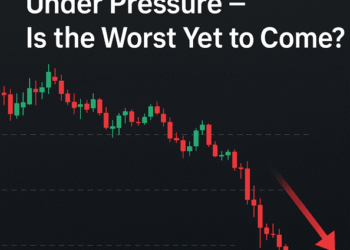Discover effective investment strategies for Altcoins to maximize your returns and navigate the crypto market with confidence.
As the cryptocurrency market continues to evolve, investors are increasingly turning their attention to altcoins—digital currencies other than Bitcoin. With thousands of altcoins available, each presenting unique opportunities and challenges, it is essential for both novice and experienced investors to develop effective investment strategies. In this blog post, we will explore various altcoin investment strategies, examining key factors such as market trends, project fundamentals, and risk management techniques. By understanding these elements, investors can make informed decisions that align with their financial goals and navigate the complexities of the altcoin landscape.

Understanding Altcoins
Altcoins, or “alternative coins,” are any cryptocurrencies other than Bitcoin. While Bitcoin paved the way for decentralized finance, altcoins offer expanded utility, including smart contracts, privacy enhancements, faster transaction speeds, and various consensus mechanisms. From Ethereum’s programmable blockchain to privacy-centric coins like Monero, altcoins bring innovation and specialization to the crypto space.
With over 10,000 altcoins currently in circulation, these digital assets cater to specific niches—finance, gaming, identity, decentralized applications (dApps), and more. However, this diversity also introduces complexity, making strategic investment more crucial than ever.
Investment Strategies
a. Diversification
One of the cornerstones of sound investing—particularly in volatile markets like crypto—is diversification. Altcoin prices can swing wildly based on market sentiment, regulations, and technological developments. By diversifying across several coins rather than putting all your capital into a single altcoin, you reduce the impact of a poor-performing asset on your overall portfolio.
Diversification should span across:
- Market sectors (e.g., DeFi, NFTs, Layer 1 blockchains)
- Coin size (e.g., large-cap like Ethereum, mid-cap like Chainlink, and small-cap emerging projects)
- Geographic or developer origin to mitigate regulatory and political risk
This strategy not only cushions against loss but also increases your chances of catching a high-performing token.

b. Research
Deep, continuous research is key to identifying promising altcoin projects. While speculative hype may temporarily boost prices, sustainable growth depends on strong fundamentals. Before investing in any altcoin, consider the following:
- Technology & Use Case: What problem does the altcoin solve? Is its technology scalable and secure?
- Team & Development: Are the developers credible and active? Regular code commits and roadmap milestones are signs of a healthy project.
- Community Support: An engaged community often indicates strong backing and long-term potential.
- Tokenomics: Analyze the token supply, inflation rate, staking rewards, and how tokens are distributed.
- Partnerships and Ecosystem: Collaborations with established brands or projects add credibility and utility.
Use trusted sources like CoinMarketCap, Messari, and project whitepapers to validate information.

c. Long-Term vs.
Short-Term Investment
Altcoin investors must decide between long-term holding (HODLing) and short-term trading. Each has its benefits and drawbacks:
- Long-Term Holding: This strategy involves investing in altcoins with strong fundamentals and holding them for extended periods (months or years). It minimizes the stress of daily price fluctuations and may yield substantial gains as projects mature. Ideal for investors with a strong conviction in a project’s future.
- Short-Term Trading: Involves capitalizing on market volatility and trends through frequent buying and selling. This strategy can be lucrative but requires technical analysis skills, quick decision-making, and close market monitoring.
Hybrid strategies—where you hold long-term positions while actively trading a portion—are also popular among seasoned investors.

d. Risk Management
Crypto markets are notoriously volatile, and altcoins can experience drastic price swings. Sound risk management is essential to protect your capital:
- Set Stop-Loss Orders: Automatically sell an asset when it drops below a certain price to prevent further losses.
- Position Sizing: Don’t overcommit to a single coin. Keep positions proportional to your risk tolerance.
- Take Profits: Periodically take profits on gains, especially during bull runs, to avoid losing unrealized gains in downturns.
- Have an Exit Strategy: Know when and why you’ll exit a position—whether due to price targets, news events, or fundamental changes.
Risk management transforms speculation into disciplined investing.
Popular Altcoins to Watch
Here are some prominent altcoins that have captured investor attention and continue to show strong potential:
1. Ethereum (ETH)
As the largest altcoin by market cap, Ethereum powers thousands of decentralized applications (dApps). With its transition to Proof of Stake (Ethereum 2.0), it offers enhanced energy efficiency and scalability. Ethereum remains the foundation of most DeFi and NFT projects.
2. Ripple (XRP)
Ripple focuses on cross-border payments and has partnered with major financial institutions. Its low transaction fees and fast processing make it a strong contender for real-world adoption, though it faces ongoing legal scrutiny from the SEC.
3. Litecoin (LTC)
Often considered the “silver to Bitcoin’s gold,” Litecoin offers faster transaction times and a more accessible price point. It serves as a testbed for new technologies like the Lightning Network.
4. Cardano (ADA)
Known for its peer-reviewed research and slow, deliberate development process, Cardano aims to create a scalable and secure platform for smart contracts. Its energy-efficient consensus mechanism and strong academic foundation make it appealing to long-term investors.
5. Polkadot (DOT)
Polkadot enables interoperability between blockchains, allowing different networks to communicate. With its parachain architecture, it’s designed for scalability and innovation, making it a favorite in the Web3 space.
Market Analysis
Understanding the market environment is essential for timing entries and exits. As of 2025, the altcoin market shows increased maturity, with higher institutional interest and more regulatory clarity compared to previous years.
Key Indicators to Monitor:
- Market Capitalization: Indicates overall interest and valuation of the crypto market. A growing altcoin market cap typically reflects rising investor confidence.
- Trading Volume: High volume often accompanies significant price moves and can validate trends.
- Dominance Index: The Bitcoin Dominance Index indicates the percentage of the total market capitalization held by Bitcoin. A declining BTC dominance often suggests an “altseason,” where altcoins outperform Bitcoin.
- Technical Analysis: Patterns like support/resistance levels, RSI (Relative Strength Index), and moving averages can help time buys and sells.
- Sentiment Analysis: Tracking social media, news, and on-chain metrics gives insight into investor sentiment.
Staying informed about macroeconomic factors, such as inflation rates, regulatory developments, and global tech trends, also influences altcoin performance.
Final Thoughts
Investing in altcoins offers the opportunity for high returns, but it comes with equally high risks. Successful altcoin investors don’t rely on hype or speculation—they build diversified portfolios, do their research, manage risk, and stay updated on market conditions. Whether you’re a long-term believer in blockchain innovation or a tactical trader seeking short-term gains, a disciplined strategy is crucial.
By applying the strategies discussed in this post, you’ll be better equipped to make informed investment decisions and navigate the complex yet promising world of altcoins.













